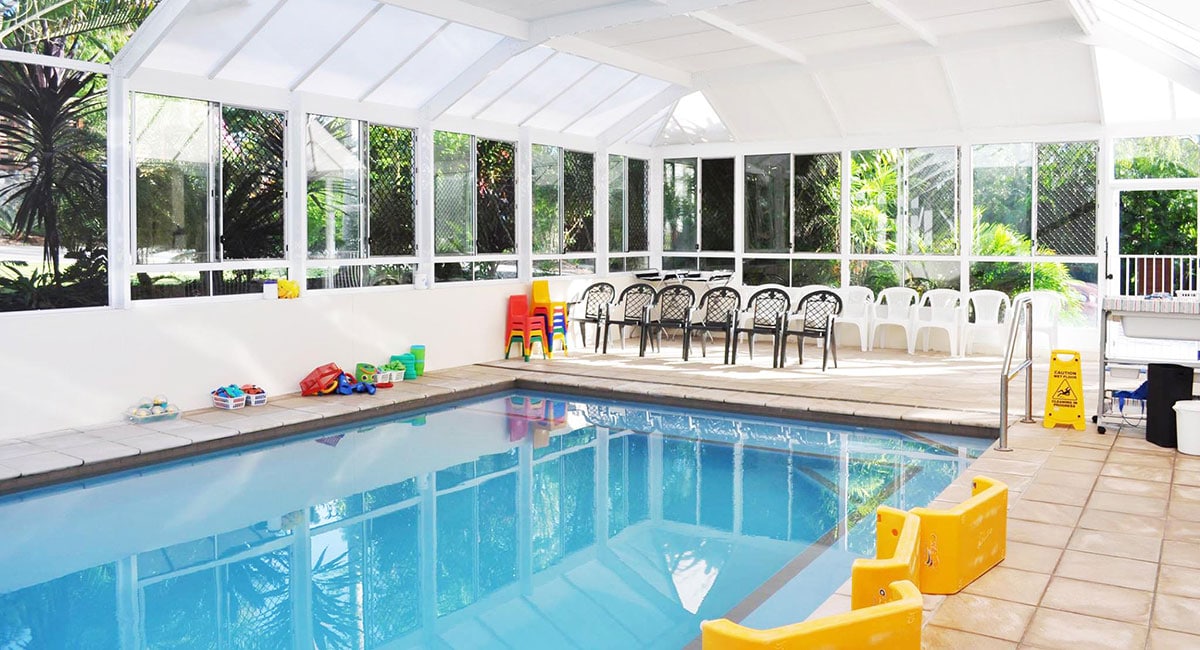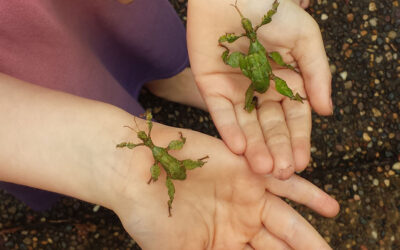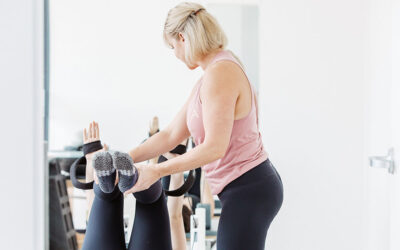We (parents) are always told to ensure pools are securely fenced, to close the gate and keep children within reach at all times. And these pool safety messages are critical in saving lives.
However, Judy Watts Swim School has added a whole extra layer onto their water safety education, with their Parenting4Pools™ program.
This unique water safety program provides critical education for parents on how to decrease the risks associated with early childhood drownings.
Having taught swimming and water safety since 1977, Judy strongly believes that children can be educated not to go in the pool the same way they are educated not to go near the road.
“Pool fencing did not become compulsory until the early 1990s. So, for the first 20 years of teaching, I focused on my out-of-water program as much as I did on teaching the children in-water skills,” says Judy.
“Water safety can be somewhat confusing for parents as the general advice usually consists of attending lessons, closing gates and supervising. There is a lot of talk about layers of protection, but very limited information about educating a child not to enter the water. We teach from birth that you must wear a seat belt, not to go near the road, or touch electricity points. The pool area should be no different. There is quite a difference between educating a child about good safe pool practices verses restraining a child. A pool gate is a restraint, as is strapping a child in a pram or being held by a parent.”
How Parenting4Pools works
From the earliest skill of smiling, our children learn to visually replicate what behaviour they see us doing.
“Children will follow what you do, so if Dad runs and jumps in the pool you can guarantee that your little ones will follow,” says Judy.
“If you open the gate and walk straight into the water, the lesson we are teaching is that when the gate is open it is ok to get into the water. By educating both parents and children on safe pool practices, we can avoid tragic accidents,” Judy continues.
Central to the Parenting4Pools pool safety method is to set up a ‘safe zone’, where you (the child/family) sit when the gate is open. This teaches children how to behave in the pool area, without going in the water.
“By setting a routine from the get-go, babies as young as four months will be able to recall,” Judy explains.
“If you are consistent in your routine, your children will know no difference when it comes to how to behave around a pool or aquatic environment. You need to ensure that all adults and other siblings are following the rules as well.”
Setting up a safe zone
When setting a safe zone, make it somewhere that can be permanently in the same place. Set a foam mat or chair and identify an area away from the pool but within the general vicinity.
- Regularly take your child into the pool/dam/river area without going for a swim.
- Take a picnic, have lunch or go and read a book in this area.
- Enter the area fully clothed not in swimwear or naked.
- When it is time to swim, then get changed. Don’t ever let your child swim naked as this teaches them that they can strip off and swim whenever they want.
- Allow a few minutes before each swim to sit and wait before entering. Lead by example
- Don’t walk around the edge of the pool.
- Enter and exit from the same point each time.
- Don’t reach into the water or lean over to grab objects.
- When cleaning your pool or testing the water try to do it when you are alone as this can create confusion.
- Don’t run and jump into the pool (sorry, dads).

Other recommendations for pool safety
Judy recommends that you try not to use flotation devices, as these create a false sense of security for both the parent and child.
“They also make it difficult if your child is having lessons, as they change the child’s natural body position and make it more difficult to learn to swim,” says Judy.
“If a child falls in the water without a floatation device, the position they will try and mimic is a vertical one—similar to the one the device creates. From this position it is almost impossible for them to be able to save themselves. Avoiding these devices is the safest option.”
Judy also suggests creating a pattern when you first get in the pool—a song or bubbles, or if they are having lessons and you are comfortable for them to swim to you a couple of times.
“It is important that you don’t just hop in the water to play. This activity also involves the parent so it becomes part of the process of getting in the pool with an adult, not alone. This may only be for a minute or two, it is also handy if you are having lessons as they will also understand you don’t just get in and play.”
Aqua Movement™
Alongside the Parenting4Pools program, Judy’s internationally renowned Aqua Movement™ program is currently used by teachers and swim schools all around the world.
Initially combining elements of massage, floating, stretching and skin-to-skin contact, the aqua movement program aims to build parents’ confidence in and out of the water.
By providing a supportive and educational framework, the use of warm water is a wonderful medium to enhance the parenting bond. The weightlessness in water allows young babies more freedom of movement, which can also be used for relaxation, muscle development and healthy brain function.
“During the nine month gestation, the baby is being supported and surrounded by amniotic fluid. This provides a safe, comfortable and nurturing environment, which we need to continue when the baby is born,” says Judy.
“I feel that this is an essential part of a baby’s development and wellbeing. Where possible, I encourage Dad to actively participate in the program as it gives him one-on-one time to further bond with baby, and also gives Mum time to have a little break.”
A baby’s first introduction to water after birth is often in a bath at an arms length to their parents.
“This can be upsetting for baby and in turn can be distressing for parents,” says Judy.
“A shower or in the big bath together can be a more enjoyable experience. You can also add a wide range of other sensory stimulants like relaxing music, oil or candles and you can adjust the lighting.”
Judy recommends you experiment with different positions and ways of holding your baby and use your free hand where possible to gently massage.
“Move the baby around in the bath as much as possible, baby will respond to the feel of the water.”
Judy commences lessons between 6 to 8 weeks of age at her swim school in Cornubia, with the aim of creating a healthy and happy affinity in an aquatic environment. Judy is also in the final stages of creating an online alternative to ensure all parents/teachers have access to her program.
About Judy Watts Swim School
Judy Watts Swim School was founded in 1977 and is family owned and operated. Judy has been actively educating in kindys, libraries and child health centres in Southeast Queensland for the past 45 years. Judy has been a leading force internationally in the design and implementation of Pool Safety Programs, she has received national and international awards for her program. Judy’s three children also work for the swim school and all specialise in different areas such as sensory and additional needs, child development and behaviour.
Spanning Brisbane, Gold Coast, Sunshine Coast and beyond, Kids on the Coast is an online guide and printed free magazine for parents. With kids events and activities, attractions & things to do with kids, schools and education, school holiday guides, health & wellbeing for families, parenting and lifestyle news. Located on Gold Coast, Sunshine Coast & Brisbane, QLD.


